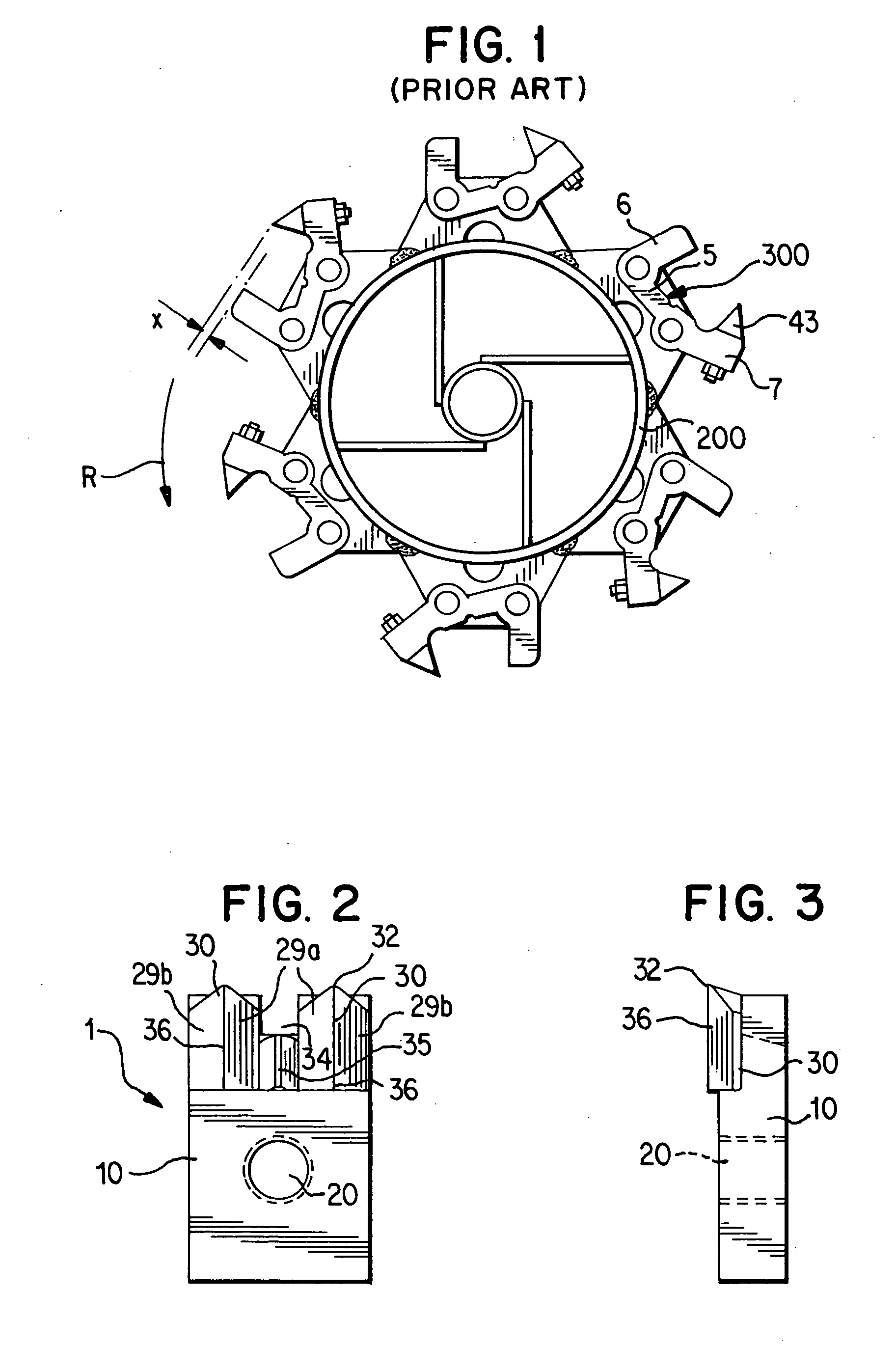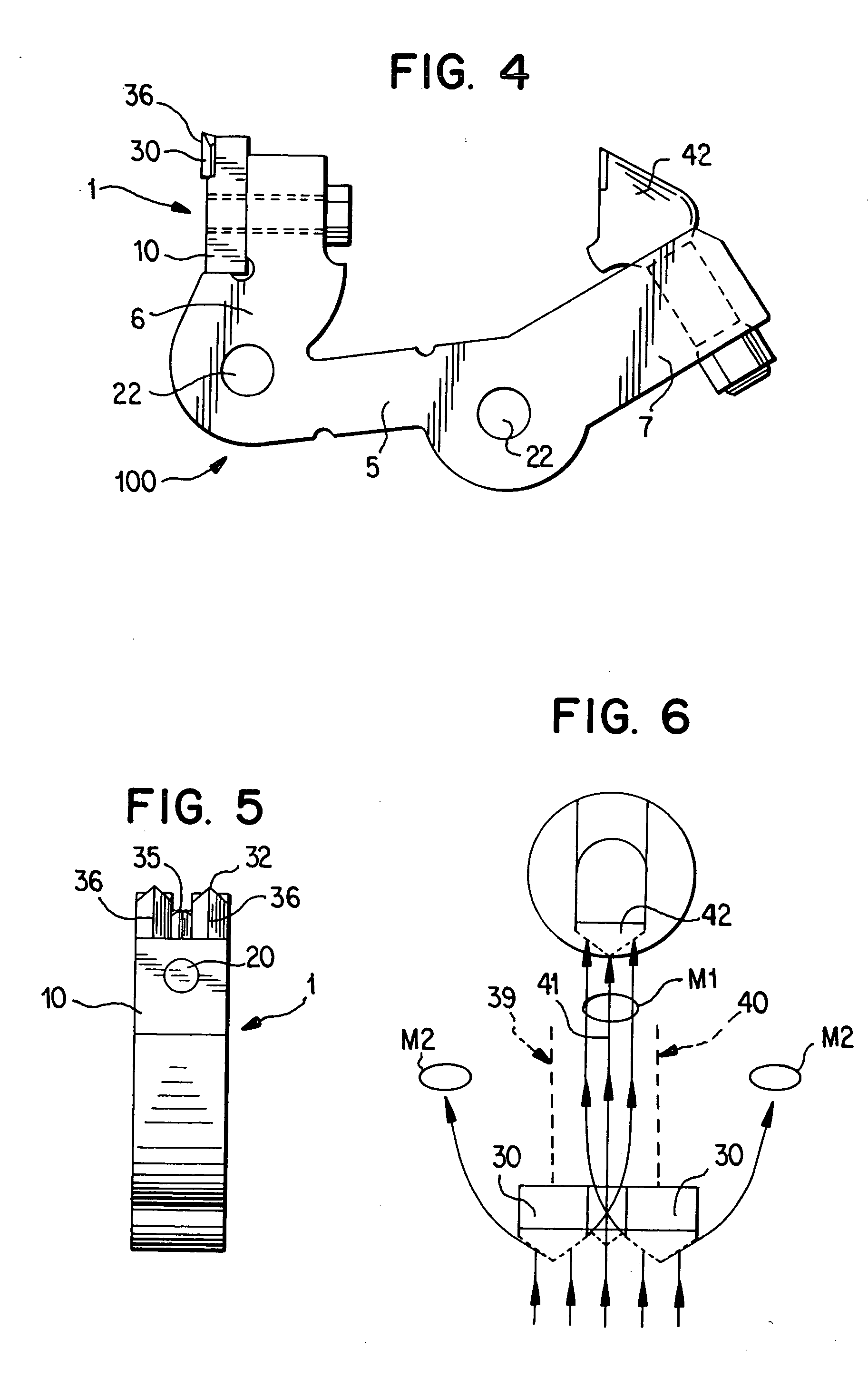Shingle processing tool and method
- Summary
- Abstract
- Description
- Claims
- Application Information
AI Technical Summary
Benefits of technology
Problems solved by technology
Method used
Image
Examples
Embodiment Construction
[0019] In the present invention, the prior art's raker has been replaced by a tool configured to cut the material being processed, and to funnel the cuttings into the path of a rear cutting tool trailing between and behind the teeth. Materials, such as asphalt shingles, can now be cut with less friction, thus minimizing any melting of the shingles.
[0020]FIG. 2 illustrates a front view of one preferred embodiment of the cutting tool 1, as the tool 1 would be “seen” by an asphalt shingle being processed. The tool 1 would be attached to the base 5 of a cutting head 100 as shown in FIG. 4. A plurality of such cutting heads would be mounted on a drum, as shown in FIG. 1, e.g., in circumferentially and axially spaced relationships as is conventional. This embodiment of the cutting tool 1 includes a holder body 10 and two cutting teeth 30 extending from the body 10 substantially parallel to one another. The teeth 30 are preferably brazed in a notch formed in an edge of the body. Each toot...
PUM
 Login to View More
Login to View More Abstract
Description
Claims
Application Information
 Login to View More
Login to View More - R&D
- Intellectual Property
- Life Sciences
- Materials
- Tech Scout
- Unparalleled Data Quality
- Higher Quality Content
- 60% Fewer Hallucinations
Browse by: Latest US Patents, China's latest patents, Technical Efficacy Thesaurus, Application Domain, Technology Topic, Popular Technical Reports.
© 2025 PatSnap. All rights reserved.Legal|Privacy policy|Modern Slavery Act Transparency Statement|Sitemap|About US| Contact US: help@patsnap.com



